- 1 Introduction to Bamboo Composite Decking
- 2 Analyzing the Bamboo Composite Decking Pros and Cons
- 3 Understanding Bamboo Composite Decking Cost per Square Foot
- 4 Bamboo Composite Decking vs Plastic Composite: A Detailed Comparison
- 5 Maintenance Guide: How to Clean Bamboo Composite Decking
- 6 Safety and Durability: Is Bamboo Composite Decking Slippery?
- 7
- 8 FAQ
Introduction to Bamboo Composite Decking
In the world of outdoor living, composite decking has emerged as a popular low-maintenance alternative to traditional wood. Among these options, bamboo composite decking is gaining significant traction for its unique blend of sustainability, durability, and aesthetic appeal. This guide delves deep into every aspect you need to consider, from initial costs to long-term maintenance, helping you make an informed decision for your home.
What Makes Bamboo Composite a Unique Choice?
Unlike traditional composites that rely on wood plastic composites (WPC), bamboo composite utilizes strands of bamboo fiber bonded with polymers. This composition leverages the incredible tensile strength of bamboo, resulting in a decking material that is exceptionally robust and dimensionally stable. It represents a fusion of natural material benefits with modern manufacturing technology.
- Rapidly Renewable Resource: Bamboo is one of the fastest-growing plants on Earth, making it a highly sustainable raw material.
- Superior Hardness: The inherent hardness of bamboo fibers contributes to a deck surface that is highly resistant to scratches and dents.
- Unique Aesthetic: It offers a distinct, contemporary grain pattern that sets it apart from wood-grain composites.
Analyzing the Bamboo Composite Decking Pros and Cons
Before investing in any decking material, a balanced view is crucial. Understanding the full spectrum of advantages and potential limitations of bamboo composite decking will ensure it aligns with your lifestyle and expectations.
Key Advantages of Choosing Bamboo Composite
The benefits of this material extend beyond its eco-friendly credentials. It is engineered for performance and ease of living.
- Exceptional Durability and Longevity: Resistant to rotting, warping, splintering, and insect damage, ensuring a long lifespan.
- Low Maintenance: Requires no annual sealing, staining, or painting. A simple cleaning regimen is all that's needed to maintain its appearance.
- Eco-Conscious Choice: The use of rapidly renewable bamboo makes it a more sustainable option compared to decking made from slow-growth hardwoods or purely plastic-based composites.
- Consistent Color and Finish: The color is consistent throughout the board and is often capped with a protective shell, preventing fading and staining.
Potential Drawbacks to Consider
While impressive, no material is perfect. Being aware of the downsides helps in planning and setting realistic expectations.
- Higher Initial Cost: The advanced manufacturing process and material quality often place it at a higher price point than some other composites or pressure-treated wood.
- Weight: Bamboo composite boards can be heavier than some alternatives, which may require additional structural support during installation.
- Heat Retention: Like many dark-colored decking materials, it can get hot under direct sunlight, a factor to consider for barefoot comfort.
Understanding Bamboo Composite Decking Cost per Square Foot
The bamboo composite decking cost per square foot is a primary concern for most homeowners. It's important to look beyond just the material cost and consider the total investment, which includes installation and long-term upkeep.
Breakdown of Cost Factors
The final price you pay is influenced by several variables. The material cost itself typically forms the bulk of the expense, but other elements are equally important in the budgeting process.
- Material Grade: Higher-end lines with enhanced cap layers and warranties command a premium.
- Board Dimensions and Profile: Wider, longer, or grooved boards may cost more than standard square-edged profiles.
- Color and Finish: Specialty colors or textured finishes can influence the price.
- Installation Complexity: Labor costs vary by region and the complexity of your deck design (e.g., multiple levels, intricate patterns).
| Cost Component | Low-End Estimate (per sq. ft.) | High-End Estimate (per sq. ft.) |
| Material Only | $8 - $12 | $13 - $20+ |
| Material + Professional Installation | $15 - $22 | $25 - $40+ |
Long-Term Value vs. Initial Investment
While the upfront cost is higher, the long-term value of bamboo composite decking is significant. The savings in maintenance—both in terms of time and money spent on sealants, stains, and repairs—can offset the initial price difference over the life of the deck.
- Elimination of Annual Maintenance Costs: No need for yearly sealing or staining, saving hundreds of dollars annually.
- Durability Reduces Repair Costs: Its resistance to splintering and rot means fewer board replacements over time.
- Added Property Value: A beautiful, low-maintenance deck is an attractive feature for potential home buyers.
Bamboo Composite Decking vs Plastic Composite: A Detailed Comparison
When deciding on composite decking, a common crossroads is choosing between bamboo-based and traditional plastic composite (WPC) products. This bamboo composite decking vs plastic composite comparison highlights the key differences.
Material Composition and Environmental Impact
The fundamental difference lies in what they're made of. This not only affects sustainability but also performance characteristics.
- Bamboo Composite: Composed primarily of bamboo fibers (a natural, fast-growing grass) and polymers.
- Plastic Composite (WPC): Typically made from wood flour (sawdust) and recycled plastics like polyethylene or polypropylene.
| Aspect | Bamboo Composite | Plastic Composite (WPC) |
| Core Material | Bamboo Fiber | Wood Flour / Sawdust |
| Sustainability | Very High | Moderate (uses recycled content) |
| Hardness & Density | Generally Higher | Variable, often lower |
| Moisture Resistance | Excellent | Good to Excellent |
Performance and Aesthetics Face-Off
Beyond composition, how do these materials stack up in daily use and appearance? Each has its own strengths that may appeal to different priorities.
- Surface Hardness: Bamboo composite often has a higher resistance to dents and impact due to the tough bamboo fibers.
- Color Fading: Both are UV resistant, but high-quality capped composites (of both types) offer the best protection against fading.
- Look and Feel: Bamboo composite typically features a linear, modern grain, while WPC often mimics the look of traditional wood grains like cedar or ipe.
Maintenance Guide: How to Clean Bamboo Composite Decking
One of the biggest selling points of composite decking is its low maintenance. Knowing how to clean bamboo composite decking properly will keep it looking new for years without the hard work associated with wood decks.
Routine Cleaning for Lasting Beauty
A regular cleaning schedule prevents the buildup of dirt, pollen, and organic matter. This simple process is sufficient for most of the year.
- Frequency: Perform a routine clean every 3-6 months, or as needed.
- Tools: Use a soft-bristle brush and a garden hose.
- Cleaning Solution: A mixture of mild dish soap and warm water is highly effective. Avoid harsh chemicals and abrasive cleaners.
- Method: Sweep the deck, apply the soapy water with the brush, scrub gently, and rinse thoroughly with clean water.
Dealing with Stains and Mold
For tougher challenges like spilled wine, grease, or mildew, a targeted approach is needed. Most capped composites are highly stain-resistant, but prompt cleaning is always best.
- For Mold and Mildew: Use a composite deck cleaner specifically designed for mold removal. Apply as directed and rinse well.
- For Tough Stains: A paste of baking soda and water can be applied, left to sit, and then scrubbed gently before rinsing.
- Prevention: Ensure proper drainage and airflow around your deck. Trim overhanging branches to reduce shade and moisture retention.
Safety and Durability: Is Bamboo Composite Decking Slippery?
Safety is paramount, especially in pool areas or regions with frequent rain. The question "Is bamboo composite decking slippery?" is therefore a critical one for families.
Traction and Texture Analysis
The slipperiness of any decking surface depends on its texture and finish when wet. Most modern bamboo composite boards are designed with this in mind.
- Textured Finishes: Many manufacturers offer boards with embossed wood-grain textures or proprietary non-slip surfaces that provide excellent traction, even when wet.
- Capped Polymer Shell: The protective cap layer is not only for stain resistance but is also often engineered to have a slight grip.
- Comparison to Wood: When dry, it offers similar traction. When wet, a textured composite can be significantly less slippery than a smooth, painted wood deck.
Enhancing Slip Resistance for Safety
If you are installing in a particularly wet area or are concerned about slipperiness, there are proactive steps you can take during selection and installation.
- Choose a Textured Profile: Opt for a board that has a pronounced grain texture or a specifically marketed "non-slip" surface.
- Proper Installation and Drainage: Ensure the deck has a slight slope for water to run off and that there is adequate spacing between boards for drainage.
- Routine Cleaning: Regularly removing algae, moss, and slick film is the single most effective way to maintain a non-slip surface.
Explicit nail splicing heavy bamboo flooring
FAQ
How long does bamboo composite decking last?
High-quality bamboo composite decking is designed to be incredibly durable. Most reputable manufacturers offer warranties ranging from 25 to 30 years, and it's not uncommon for the decking to last even longer with proper care. Its resistance to moisture, insects, and UV damage prevents the common causes of deck failure, ensuring a long lifespan with minimal degradation.
Can you power wash bamboo composite decking?
It is generally not recommended to use a high-pressure power washer on composite decking. The intense pressure can damage the protective polymer cap, potentially opening the surface to staining and moisture ingress, and can void the manufacturer's warranty. For effective and safe cleaning, stick to a garden hose, a soft-bristle brush, and a mild soap solution as outlined in our maintenance guide on how to clean bamboo composite decking.
Does bamboo composite decking get hotter than wood?
Like most composite and synthetic materials, bamboo composite decking can get hot under direct, intense sunlight, especially in darker colors. However, its heat retention is comparable to other composite materials and often less than some PVC decking options. Lighter color choices will naturally remain cooler. The texture of the board can also slightly mitigate heat absorption compared to a completely smooth surface.
Is bamboo composite decking more expensive than traditional composite?
Typically, yes. The bamboo composite decking cost per square foot is often at the premium end of the composite market. This is due to the cost of the bamboo raw material and the specialized manufacturing process required to bind the tough bamboo fibers. However, many homeowners find the investment justified by its superior hardness, unique aesthetics, and strong environmental profile, as highlighted in our bamboo composite decking vs plastic composite analysis.

 English
English Deutsch
Deutsch
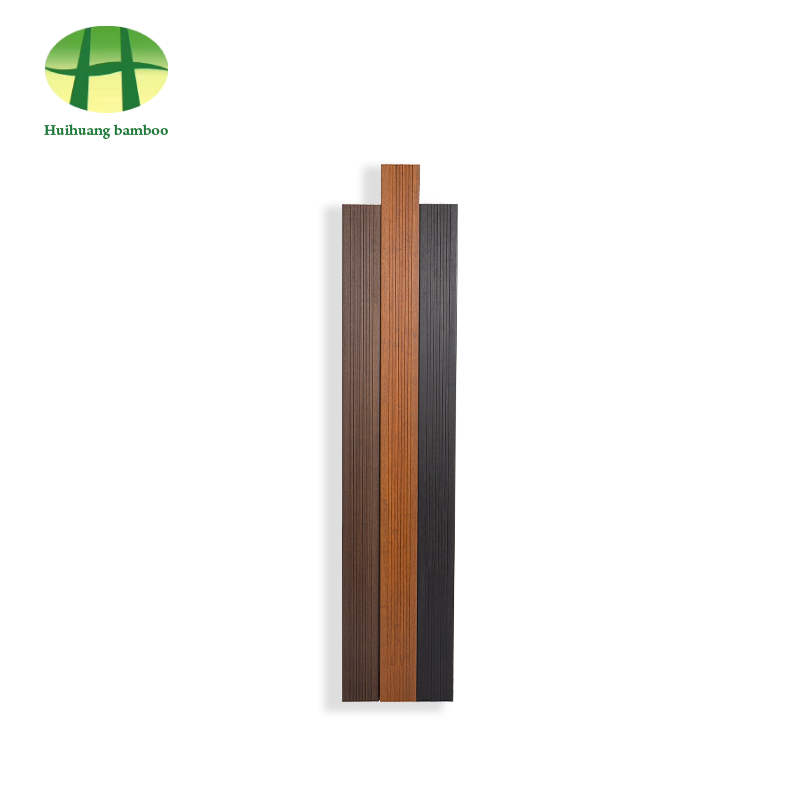
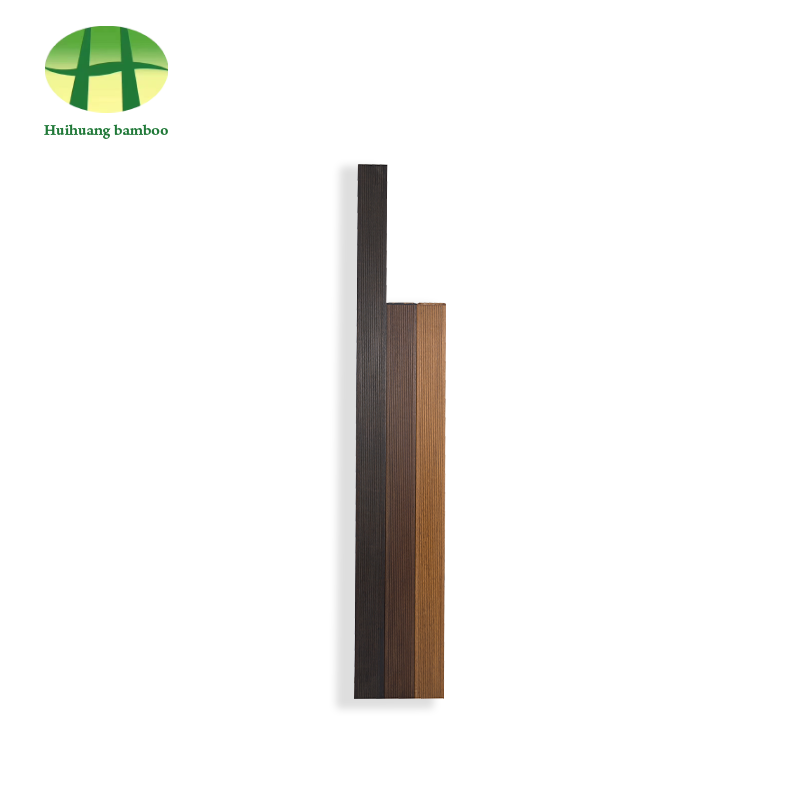
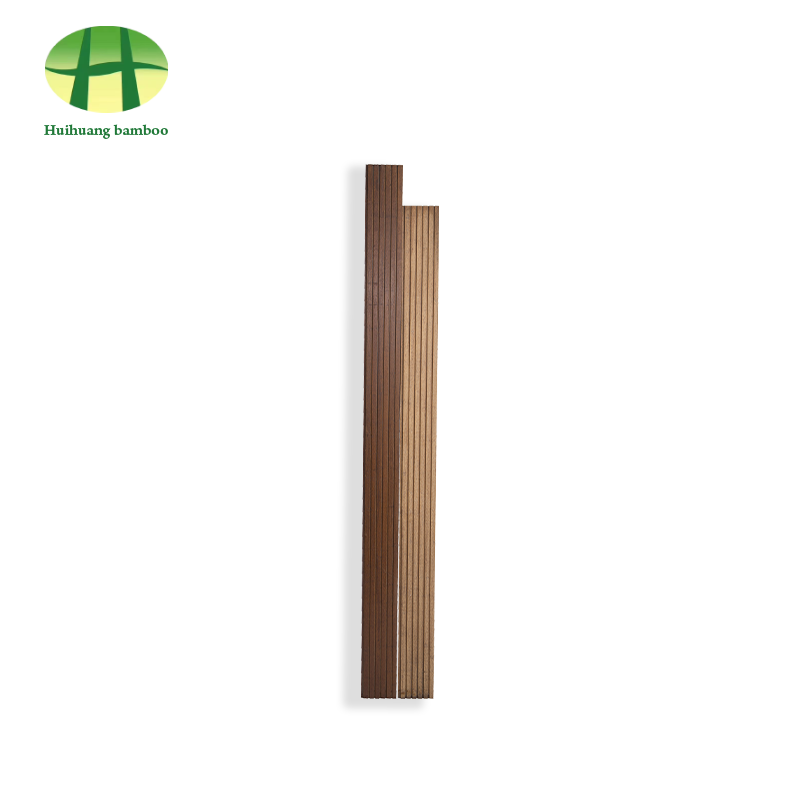
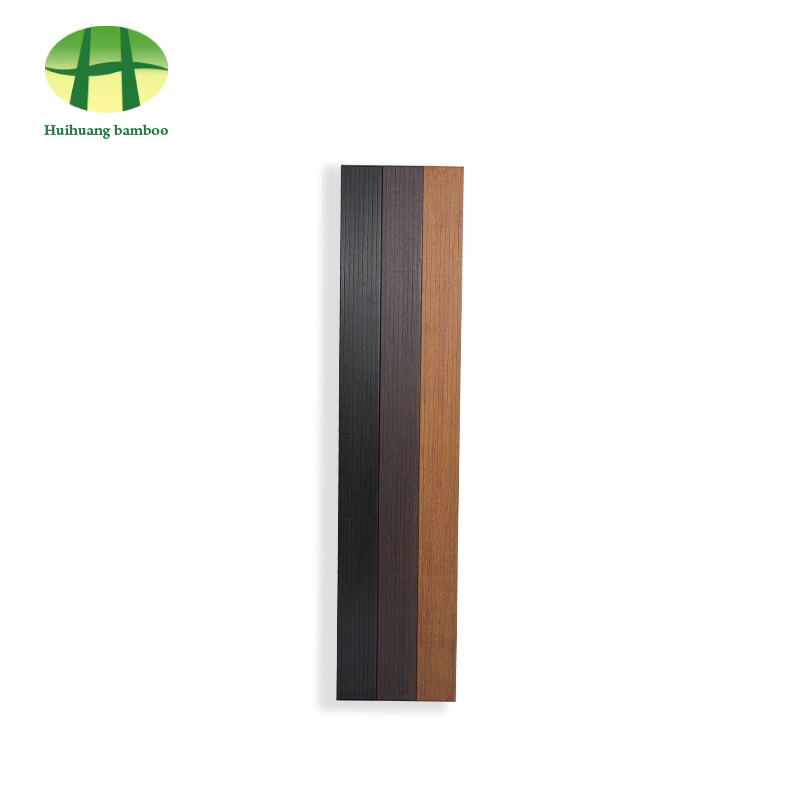
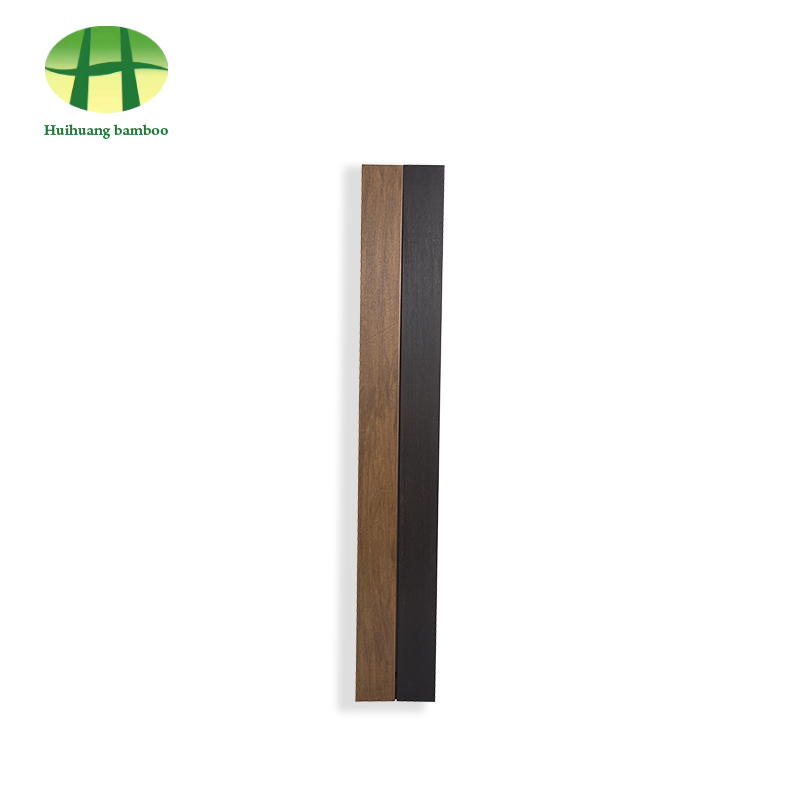
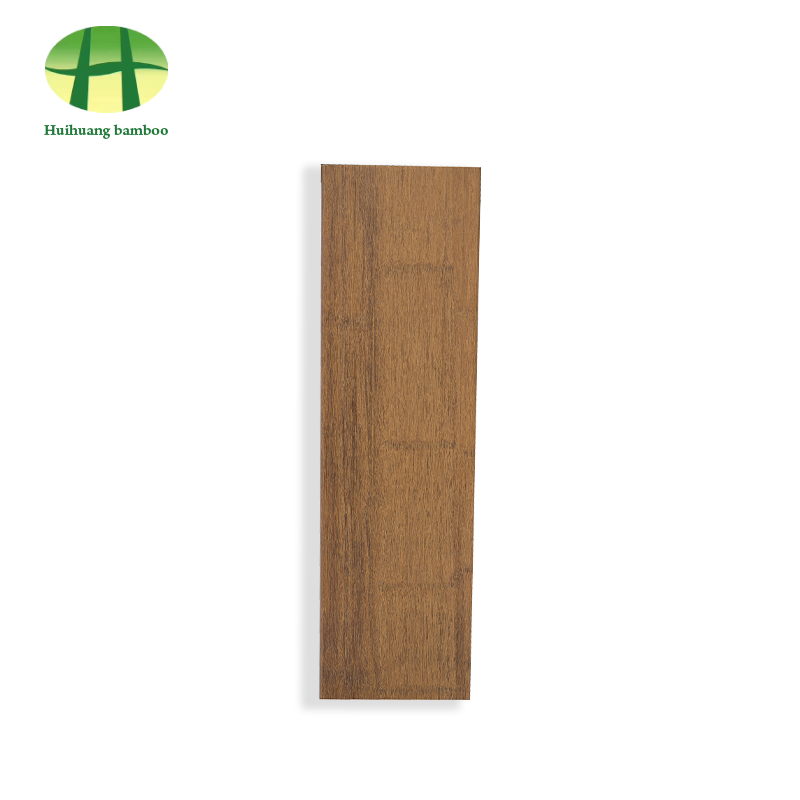

 +86-572-5215066 5216895
+86-572-5215066 5216895 office@hh-bamboo.com
office@hh-bamboo.com East Side of Huanggang RD,Ningdun County, Ningguo ,Xuancheng City,Anhui Province,China.
East Side of Huanggang RD,Ningdun County, Ningguo ,Xuancheng City,Anhui Province,China.